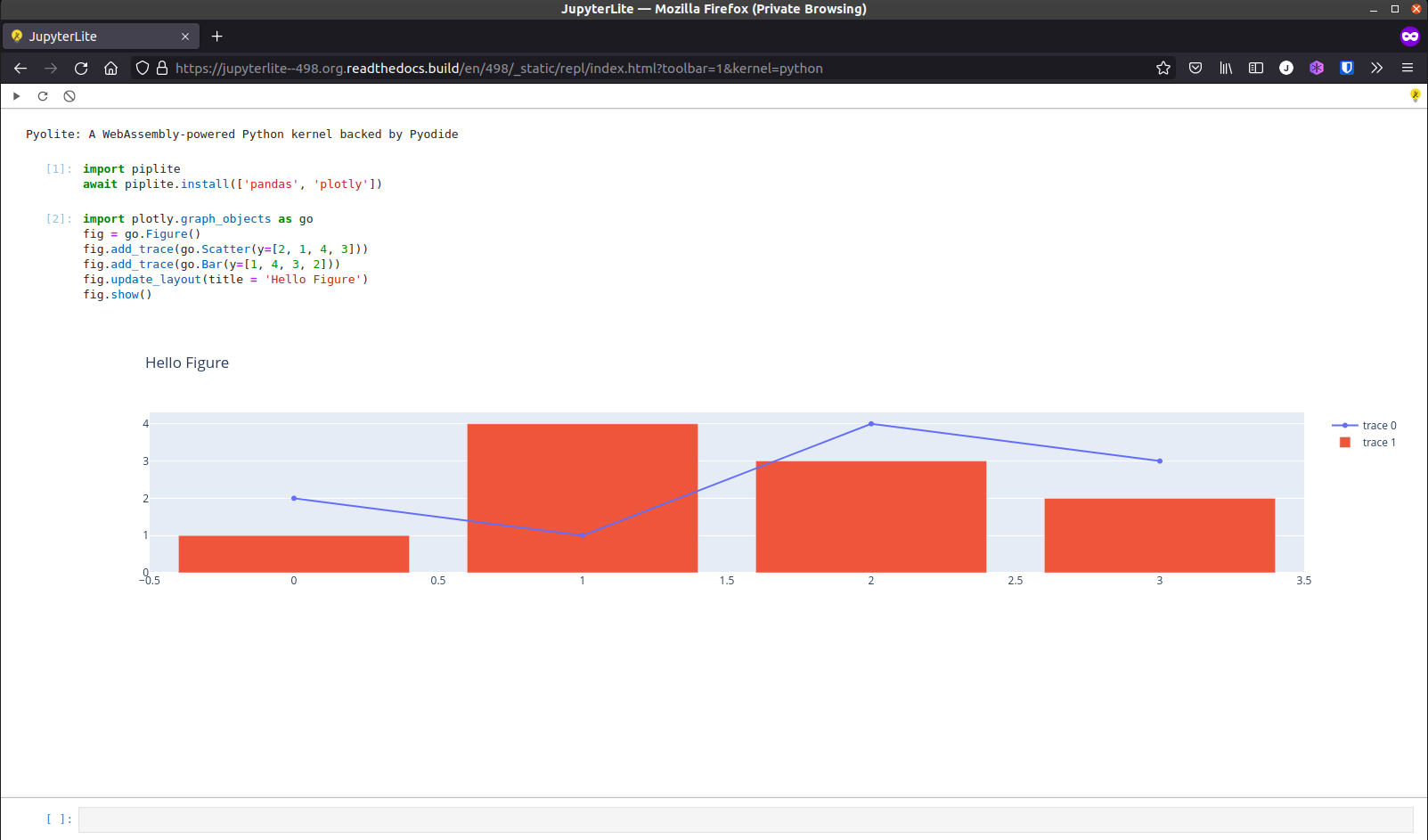Embed a live REPL on a website#
JupyterLite includes a minimal REPL application by default, based on the JupyterLab
Code Console.

Hint
Check out the Quick Start Guide to learn how to deploy your own JupyterLite website and have full control on the environment and extensions installed.
The snippets below use the public facing jupyterlite.github.io/demo as an example.
Embedding the REPL on another website#
Once you have a JupyterLite deployment ready to use, you can embed the REPL on any website with the following code snippet:
<iframe
src="https://jupyterlite.github.io/demo/repl/index.html"
width="100%"
height="100%"
></iframe>
Configuration#
The behavior and the look of the REPL can be configured via URL parameters.
Select a kernel by default#
To avoid the kernel selection dialog and choose a given kernel by default:
<iframe
src="https://jupyterlite.github.io/demo/repl/index.html?kernel=python"
width="100%"
height="100%"
></iframe>
Enable the toolbar#
The toolbar can be enabled (opt-in) to add a couple of useful buttons:
<iframe
src="https://jupyterlite.github.io/demo/repl/index.html?toolbar=1"
width="100%"
height="100%"
></iframe>
Auto execute code on startup#
Custom code can automatically be executed on startup:
<iframe
src="https://jupyterlite.github.io/demo/repl/index.html?kernel=python&code=import numpy as np"
width="100%"
height="100%"
></iframe>
Themes#
It is also possible to select a theme, for example to use JupyterLab Dark:
<iframe
src="https://jupyterlite.github.io/demo/repl/index.html?theme=JupyterLab Dark"
width="100%"
height="100%"
></iframe>
Additional themes can be installed with pip if they are distributed as a JupyterLab
prebuilt extension. For example:
pip install jupyterlab-gt-coar-theme
See the how-to guides for more details on how to customize the environment and add more themes and extensions.